I am walking up a flight of stairs in a disused gym on the outskirts of Nîmes. It’s not the most obvious place to visit in this southern French city. Nîmes has the finest intact Roman buildings outside Italy, including the Maison Carrée (a 1st century AD temple) and the Arena, an amphitheatre that’s a perfectly scaled down version of Rome’s Colosseum.
The walled medieval city that grew up around the Roman core is a haven for independent shops and restaurants. There are two striking contemporary museums, one dedicated to “Romanité” and another, designed by Norman Foster, to contemporary art.
So, why the old gym? A heavy rhythmic pounding greets me at the top of the stairs. So does Guillaume Sagot, a 37-year-old former digital marketer and Nîmois. He returned to his home city from Paris and decided to set up a business making jeans. Hence the rhythmic pounding: in the open space below us, two looms are banging out the warp and weft of denim fabric.
Guillaume’s venture into clothes manufacturing is small-scale, a niche project, but, for him and the town, it is also a defiantly romantic gesture. Denim was first made in Nîmes — the clue is in the name — but it was last made here during the first world war. By that stage, the manufacture of what would become arguably the world’s most popular clothing staple had decamped to the US, pioneered by a San Francisco dry goods store owner called Levi Strauss.
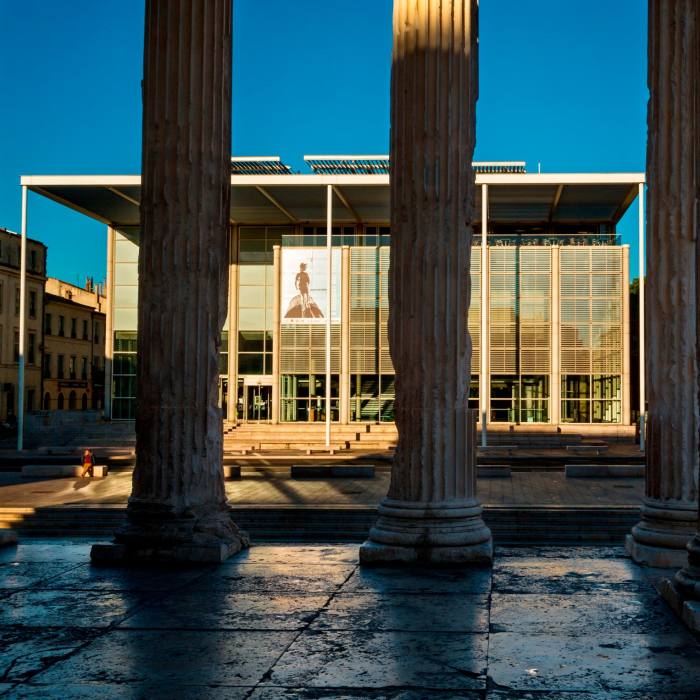
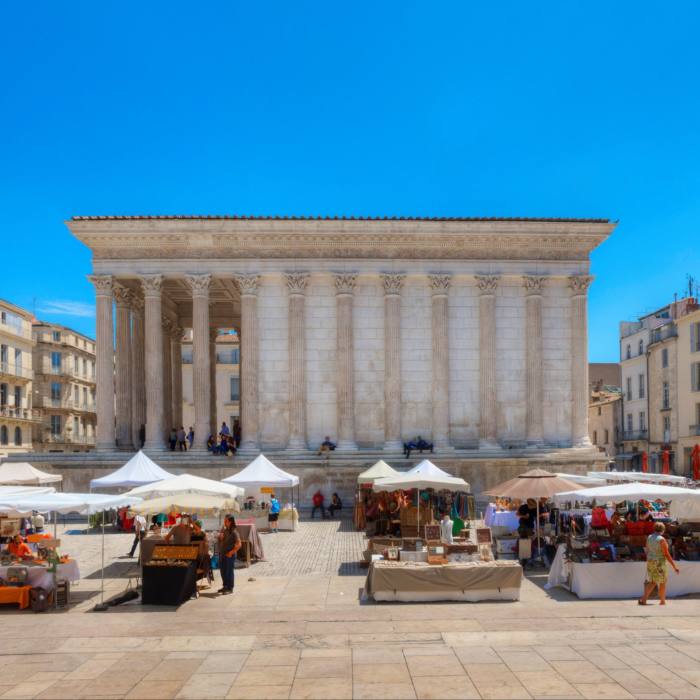
Having previously made jeans using denim from Italy and a factory in Marseille, Guillaume decided to bring denim production back home, opening this Nîmes workshop mid-pandemic in 2020. This year he has started running tours for visitors to see his work, and learn the story of denim.
And, like every story in Nîmes, it begins with the Romans, specifically with the triple-tiered Pont du Gard, built in the middle of the first century to span the River Gardon, 18km north-east of the city. It was part of an aqueduct that brought water some 50km from the springs of the Fontaine d’Eure near Uzès to the fashionable Roman settlement of Nemausus (Nîmes). The area had been settled by veterans of Julius Caesar’s Gaul campaigns. (So began a tradition: the Gard countryside is still populated by wealthy retirees, this time from the corporate battlefields).
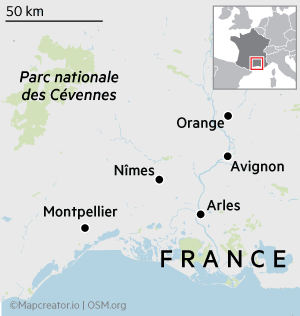
Some 1,500 years later, that ready supply of water made textile production — a notoriously thirsty process — possible and the industry thrived and innovated in the city. In the late 17th century, the Nîmes producers began using a weaving pattern that used a dyed warp thread and weft that was left white, which created a hard-wearing fabric ideally suited to tough work in the rocky land of the south-west. The burgeoning British textile cities of Manchester and Leicester were eager customers for the new material, although those mill owners’ commercial savvy was not matched by their linguistic expertise: they took to calling their imported Serge de Nîmes “denim”.
A Ligurian port also played an important part in those 18th century supply chains. The denim garments that arrived in the US via Genoa became known as “jeans”.
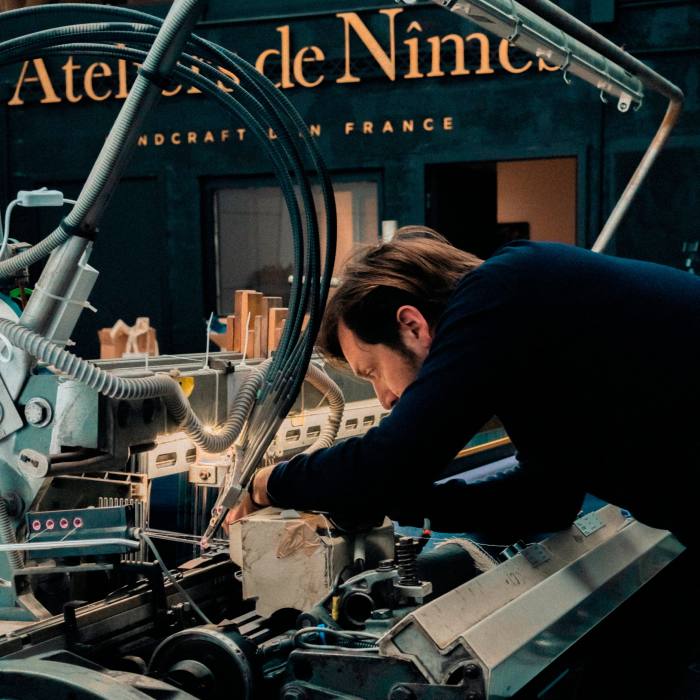
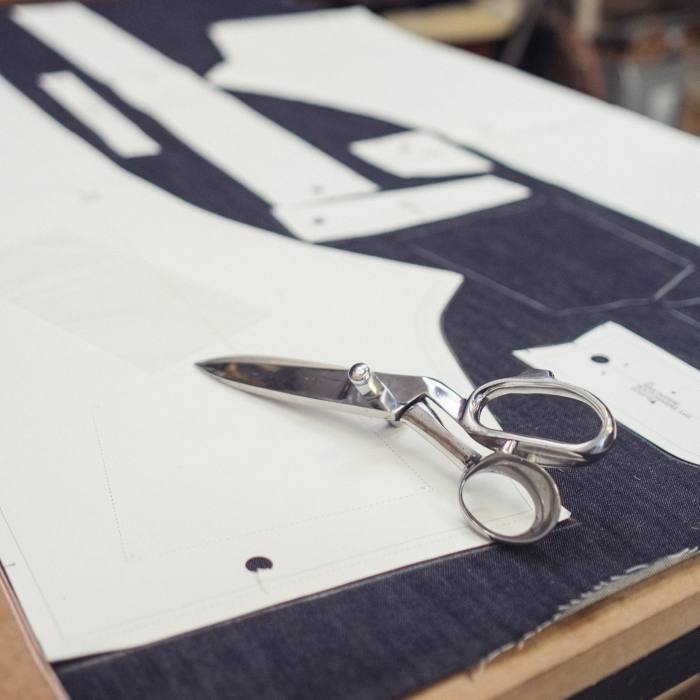
The earliest swatches of denim are now showcased in the Nîmes town museum. You see how much this humble cotton twill is woven into the fabric of our modern social and political history. There’s a late 18th-century Carmagnole jacket of the kind favoured by the 1789 revolutionaries. Next to it is a 20th-century denim jacket popularised by very different kinds of revolutionaries, such as James Dean.
Over a coffee in the Place du Marché, I try to count how many of today’s Nîmes citizens are wearing jeans. Seven or eight out of 10, I reckon, with the trousers most likely made in China, Bangladesh, Turkey or Pakistan. If only Nîmes had a clothing equivalent of the PDO, or protected designation of origin.
But a two-minute walk from the square, they can do something they’ve not been able to do in many generations: buy a pair of jeans made in Nîmes. Guillaume opened his Atelier de Nîmes shop just before Covid hit. At €180 a pop, they are not too pricey once you’ve discovered (as I did) about the soft, unglued, single-strand threads he uses in defiance of the mass production techniques. There’s a thread of national pride woven in, too.
Details
For details on Guillaume Sagot’s company, see ateliersdenimes.com; workshop visits for groups cost from €50. Mark Jones was a guest of the Imperator hotel (maison-albar-hotels-l-imperator.com; doubles from €293)
Find out about our latest stories first — follow @ftweekend on Twitter


